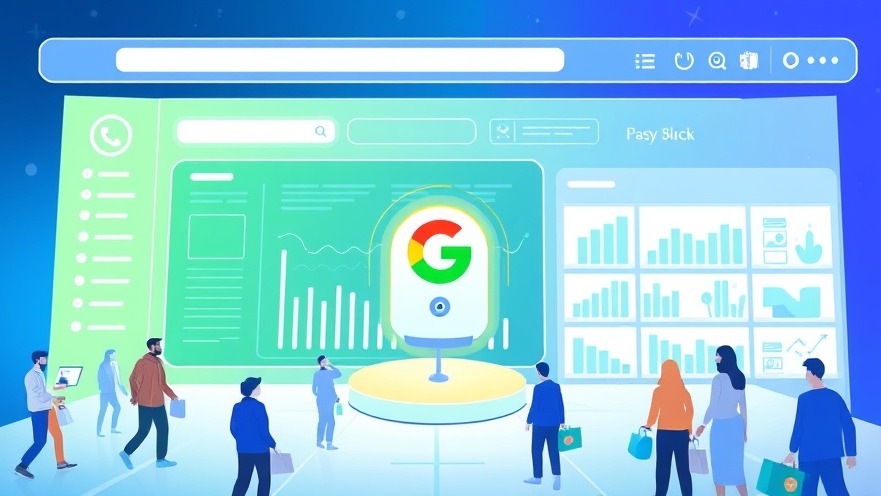The marketing landscape is always changing, and right now, it feels like a massive earthquake! Many online businesses are seeing their website visits — what we call "clicks" — drop significantly, even though more people are seeing their content, leading to a strange situation where "impressions" are up but clicks are down.
Key Takeaways
AI Overviews are changing the game: Google's new AI Overviews are summaries that show up right at the top of search results, often answering questions directly without users needing to click on a website.
Informational content is most affected: If your content mainly provides "how-to" guides or general information, you're more likely to see a drop in clicks because AI Overviews are designed to answer these types of questions.
Focus on transactional content: The big secret to thriving in this new environment is to create content that encourages people to do something — buy a product, book a service, or sign up for a consultation. This is called "transactional content."
Find underserved keywords: Look for specific phrases people search for when they're ready to buy or act, especially those where your competitors aren't actively trying to capture those searches.
Local presence matters: For businesses serving a local area, optimizing for local searches and building a strong local online presence is more crucial than ever.

The AI Tsunami: Why Your Website Clicks Might Be Disappearing
Have you ever searched for something on Google and, instead of clicking on a website, found the answer summarized right there at the top? That's Google's new AI Overviews in action. While super helpful for users looking for quick answers, it's creating a seismic shift for online businesses, especially those who rely on people clicking through to their websites.
Imagine a bustling storefront. Suddenly, a helpful robot pops up right outside, giving everyone exactly what they came for without them ever needing to step inside your shop. That's what AI Overviews are doing to many online publishers.
Studies are already showing the impact. Ahrefs, a big name in the world of online marketing research, conducted a study that revealed AI Overviews can decrease clicks by as much as 34.5%. Think about it: that's over a third of your potential customers no longer visiting your site directly!
This "click drought" primarily hits informational content. This is content that answers questions like "How to fix a leaky faucet?" or "What are the best dog foods?" AI Overviews are designed to summarize this kind of information, making it less likely for users to click through to the original source. If your business primarily publishes these types of "how-to" articles or general guides, you're likely feeling the squeeze.
Don't Just Inform, Inspire Action!
The solution to this challenge isn't for everyone, but if you offer a product or service, you have a golden opportunity. The key is to pivot your content strategy from simply informing to actively encouraging action. We're talking about transactional searches.
Transactional searches are when someone types something into Google because they're ready to do something or buy something. They're looking for a solution to a problem and are ready to take the next step.
Think about the difference:
Informational: "How to choose a reliable plumber?" (They're still researching.)
Transactional: "Emergency plumber near me" or "Best boiler repair services Biddeford, Maine" (They need help now.)
This is where the magic happens! When you focus on these transactional searches, you're connecting with people who are much closer to becoming a customer.
"The best way to predict the future is to create it." - Peter Drucker
See How Digital Marketing Can Drive More Traffic to Your Website
Ready to not just survive but thrive in this new digital landscape? Our team specializes in strategies that cut through the noise and get you in front of customers who are ready to say "YES!"
Brand Voice Strategy – Let our team help you create your unique brand voice to attract your ideal customer. This means finding the perfect way your business "talks" to the world, ensuring consistency everywhere.
Market Growth Opp Research – Let our team show you where you can gain additional traffic that you are missing. We dig deep to find hidden opportunities in your market.
Local SEO - Unlock more SEO (Search Engine Optimization) traffic. See real results. Dominate your local market. For local businesses, showing up for searches like "best pizza near me" is crucial, and we make sure you do!
Dominate Google – Let us get your company to the top of Google. We use our expertise to make sure your business ranks high in search results.
Competitive Link Analysis – Know what your competitors are doing. We look at who links to your competitors' sites to understand their strategies and find opportunities for you.
Geo-Targeting – Let us find your customers in your desired location. We help you target your marketing efforts to people in specific geographical areas.
Content Marketing - Our team creates epic content to be shared, generate links, and attract traffic. We know the secret recipe for success. This is about creating valuable, engaging content that people love and Google rewards.
Paid Media Advertising- Effective paid strategies with clear ROI (Return on Investment). You pay per result with us. This is where we run ads on platforms like Google, Facebook, YouTube, and TikTok, making sure you get the most bang for your buck.
Blogging Services – Let us create a blog that will help you rank. Our blogs are not just informative, they're designed to attract attention and get found by potential customers.
Search Box Optimization—Owning a keyword in your local area is the best way to dominate your local market. Imagine someone typing "best plumber in [your town]" and your business being the first thing they see!
Search Price Optimization – Not only can you own the keyword in your local area and nationally, but you can control your advertising cost by getting out of the price war that exists in pay-per-click advertising and achieve a higher ROI. We help you get more for less from your ad budget.
-
Marketing Consulting: Develop tailored strategies to grow your brand and maximize impact.

Your Launchpad to Content Greatness: How to Get Google AI and Customers to Say "YES!"
To truly shine in this new era, your content needs to be more than just informative. It needs to be a call to action! This is where we shift our focus to action-driven content that encourages your audience to say "YES" to themselves and, ultimately, to your business.
1. Focus on Benefits, Not Just Features
Think about what your product or service does for your customer, not just what it is.
Instead of: "Our software has 50 different tools." (That's a feature)
Try: "Imagine cutting your workload in half and doubling your productivity." (That's a benefit!)
When you talk about benefits, you're painting a picture of a better future for your customer. For example, a local gym shouldn't just say "We have 20 treadmills." Instead, they could say, "Picture yourself feeling energized and confident, ready to conquer your day after an amazing workout."
2. Use Emotional Triggers
People make decisions based on emotions as much as logic. Appeal to their desires.
Appeal to desires: Success, recognition, financial freedom, peace of mind.
Example: "Picture yourself closing deals effortlessly, becoming the top performer in your company."
Consider a financial advisor. Instead of listing investment options, they could say, "Imagine the peace of mind knowing your future is secure, and you can truly enjoy your retirement without financial worries."
3. Create a Sense of Urgency
Sometimes, a gentle nudge is all it takes to get someone to act.
Limited-time offers or exclusive opportunities: These can drive immediate action.
Example: "Only 5 spots left for our transformative workshop – will one be yours?"
For a small bakery, this could be, "Our fresh-baked sourdough sells out fast – grab yours before they're gone!" This encourages immediate decision-making.
4. Provide Social Proof
People trust what other people say about you.
Testimonials and user-generated content: These build trust and credibility.
Example: "Join the 10,000+ professionals who have revolutionized their careers with our method."
A local restaurant could feature a customer testimonial: "Sarah from down the street says, 'This is the best burger I've ever had!'" This is much more convincing than the restaurant just saying they have good burgers.
Balancing Information with Motivation
While we're moving away from pure "how-to" content, it's still important to provide value. The key is finding the right balance:
Offer a taste of your expertise without giving away the entire recipe: Share enough to show you're an expert, but leave them wanting more, which leads them to contact you.
Present challenges and pain points, then position your solution as the answer: Show you understand their struggles, then reveal how you can help.
Use storytelling to make complex concepts relatable and engaging: People connect with stories.
Real-World Success Stories: Turning AI Challenges into Opportunities
Let's look at real examples to spark inspiration and see how businesses are already winning with this approach:
Local Coffee Shop: "What’s the best coffee shop in Seattle?" A Seattle café optimized for this by creating a blog post highlighting their unique roasting process and inviting people to "taste the difference." Result? They landed a Google Featured Snippet (that quick answer at the top) and saw a 15% increase in foot traffic within a month. People weren't just looking for information; they were looking for their next great cup of coffee.
Fitness Coach: Instead of just "How to start a fitness routine at home?", a personal trainer answered with a 50-word snippet about achieving your fitness goals and a motivational story about a client's amazing transformation, showing how they helped someone reach their dreams. Their site appeared in the People Also Ask (PAA) section, driving 200 new sign-ups in three months.
Plumber’s Triumph: A local plumber targeted "How to unclog a drain without chemicals?" with a clear, step-by-step answer that still subtly highlighted the complexity and potential for DIY mistakes, concluding with an invitation to "let the pros handle it safely." Their PAA appearance led to a 25% boost in service calls.
These businesses understood that while AI Overviews answer questions, they don't replace the need for services or products. They leveraged the AI to get seen and then crafted their message to inspire action.
How to Get Google AI to Love Your Content (And Get You Customers!)
The key is creating content that Google’s AI loves and that inspires your audience to act. Here’s how to do it:
-
Find the Right Questions: Use tools like AnswerThePublic or Google’s own PAA (People Also Ask) boxes to discover what your customers are asking. For example, a home organizer might target “How to declutter a small apartment fast.” Pro tip: Type your main keyword (e.g., “home organizer”) into Google and scroll to the PAA section for ideas.
Example: A dog trainer finds “How to stop puppy biting quickly?” and creates a blog post answering it, but focuses on how their training program provides a long-term solution.
-
Answer Clearly and Concisely: Google loves answers that are 40–60 words for Featured Snippets. Use simple language and structure your answer as a paragraph, list, or table.
Example: For “What’s the best way to learn guitar?”, write: “Look for certified instructors, structured lessons, and a supportive learning environment. Check reviews and try a sample class to ensure it fits your style and goals.”
-
Optimize Your Content: Place the question as an H2 or H3 heading, followed by the answer. Include your main keyword (e.g., “guitar lessons”) and related terms (e.g., “beginner guitar,” “guitar classes”).
Example: A blog post titled “Top 5 Questions About Learning Guitar Answered” with subheadings like “What Makes a Great Guitar Instructor?”
-
Use Structured Data: Add FAQ schema markup to your website. This is a simple code that tells Google your content answers specific questions, increasing your chances of appearing in PAA. Don't worry, you don't need to be a tech wizard; there are plugins and tools that make this easy.
Example: A tax accountant adds FAQ schema to a page answering “How often should I pay estimated taxes?” and lands in PAA.
-
Engage with Storytelling: Instead of a dry answer, weave a story. For “What’s the best gym in town?”, describe a person's journey from being out of shape to feeling incredible, all thanks to your gym's welcoming community and personalized coaching.
Example: “When Mark joined our fitness community, he was struggling with motivation. Now, he's lost 30 pounds and runs marathons. Our secret? A supportive environment and coaches who truly care.”
Frequently Asked Questions (FAQs)
Q: What is a "keyword" in marketing? A: A keyword is simply a word or phrase that people type into search engines like Google when they're looking for information, products, or services. For example, "best coffee maker" is a keyword.
Q: What does "SEO" mean, and why is it important? A: SEO stands for Search Engine Optimization. It's the process of making changes to your website content and technical setup so that it appears higher in search engine results. It's important because the higher you rank, the more likely people are to find your business.
Q: How do I know if my content is "transactional"? A: Transactional content focuses on helping someone make a purchase or take a specific action. If your content aims to get someone to buy, sign up, or book a service, it's transactional. If it just gives information, it's informational.
Q: What's the difference between "impressions" and "clicks"? A: An impression means your content was shown to someone, even if they didn't click on it. A click means someone actually clicked on your link and visited your website. AI Overviews can increase impressions because your summary shows up, but they can decrease clicks because people get the answer without visiting your site.
The dark reality of being an internet publisher today is facing the disruption of AI Overviews. But for businesses offering products or services, this disruption is your golden opportunity. It’s a chance to stop merely informing and start inspiring, to shift from "how-to" to "how you can achieve it with us." By focusing on underserved transactional searches, understanding your competitors' weaknesses, and building content that resonates with both Google's AI and your audience's deepest desires, you won't just survive—you'll thrive.
I hope you enjoy reading this blog post. If you want to be our next success story, have my team at Digital Marketing All do your marketing. Click here to book a call!
 Add Row
Add Row  Add
Add 








Write A Comment